
If you are a
customer from
UNITED STATES,
click below.
BUY NOW!
|

If you are a
customer from
CANADA,
click below.
BUY NOW!
|
Fast Splint Matrix 1:1 fibers
Fast Splint Matrix® 1:1 fiber is ideal for orthodontic retainers. It has a low profile which results in a very unobtrusive retainer that is more than strong enough to maintain tooth position and resist tooth movement.
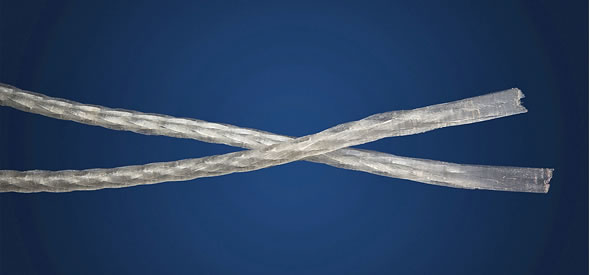
Pre-impregnated and Compressible
Fast Splint Matrix® fibers are made from e-glass and are pre-impregnated in light curable UDMA or urethane dimethacrylate resin. This pre-impregnation makes the fibers easier to work with and results in a more consistent and stronger finished product from case to case compared with older generation fibers that come dry and have to be resin impregnated by the user. When fibers are pre-impregnated under controlled conditions the result is a more complete penetration of the fiber bundle, which results in a stronger matrix. Dry fibers impregnated by the user effectively have different physical properties every time as it is nearly impossible to re-create the identical resin impregnation process from case to case.
Fast Splint Matrix® fibers are designed to be easily compressed. Compression of the fibers means that: 1) more fibers will be in contact with tooth structures - resulting in stronger bonds, and 2) that they will have less bulk - making them more comfortable for the patient. In addition the compression of the fibers creates a thin strip of resin on each side of the fiber bundle that further enhances bonds.


When using a silicone matrix technique - Fast Splint Matrix® is more than fibers!
Fast Splint Matrix® is about more than the fibers. Fast Splint Matrix® is a concept of using components to make the fabrication and placement of fiber splints and retainers easier, faster, and more precise. Two of the key elements are:
A) Special Gauge Spacer Wax:
The Fast Splint Matrix® technique uses a special gauge sticky spacer wax that is used to precisely define the desired position of the splint or retainer. This “indexing” pays off when the silicone matrix is made (see image) and assures that the fiber splint/retainer is ultimately positioned exactly where intended.
B) Matrix/Index:
The Fast Splint Matrix® technique incorporates the fabrication of a matrix or index using clear vinyl silicone. This matrix serves several purposes:
- With the spacer wax, records the exact intended position of the splint/retainer
- Creates a record of the area to be splinted
- Compresses the fibers
- Acts as a carrier for the fibers when placed
- Simplifies and speeds placement of the fibers intra-orally
- Permits accurate positioning of the fibers intra-orally
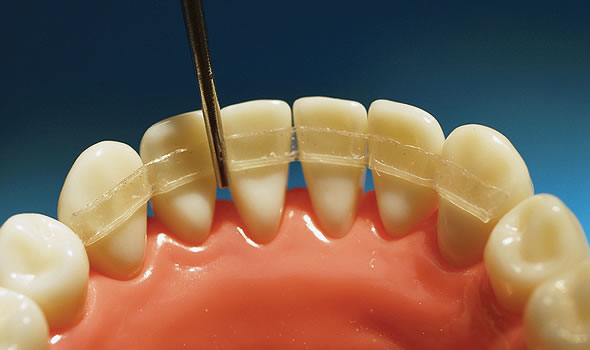

Abbreviated Step by Step - Ortho Lingual Retainer (Direct Technique with a Silicone Matrix)
Step 1

Apply the custom gauge wax strip to establish the position of the final retainer.
Step 2
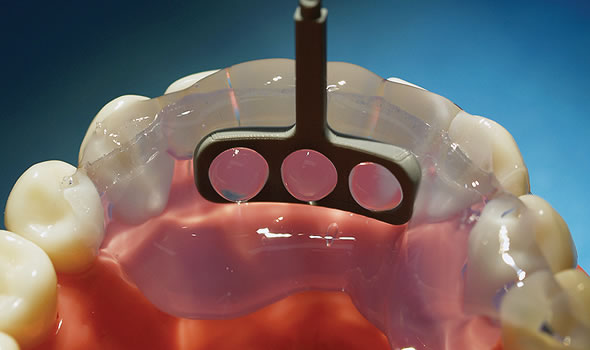
Use a transparent silicone to create an index or matrix of the tooth area where the retainer will be bonded.
Step 3
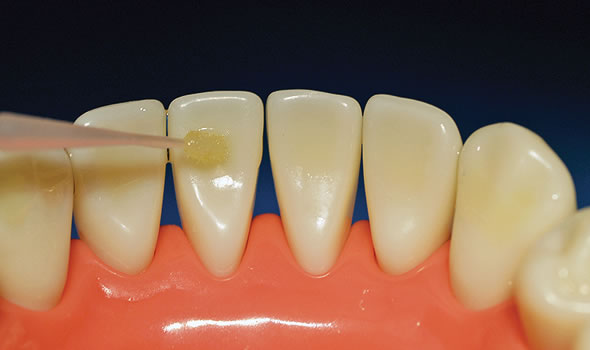
Prepare tooth surfaces as per standard bonding procedures.
Step 4
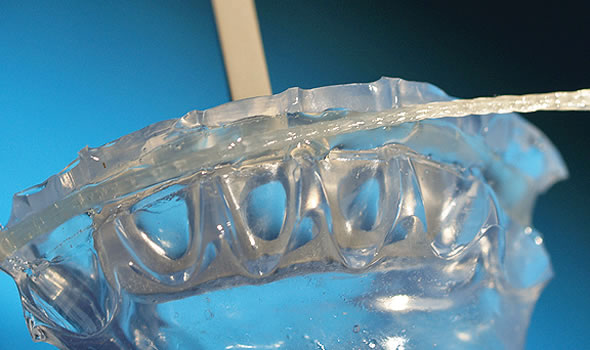
Load the 1:1 fiber into the index/matrix.
Step 5
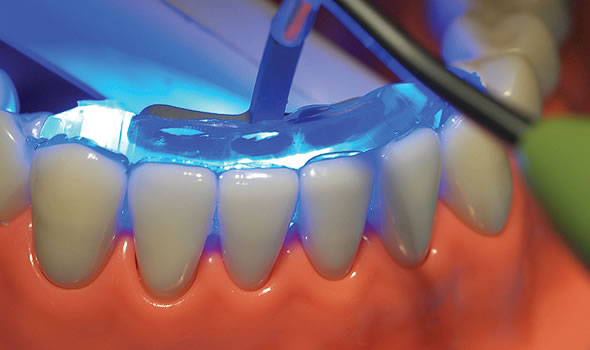
Position the index/matrix and light cure.
Step 6
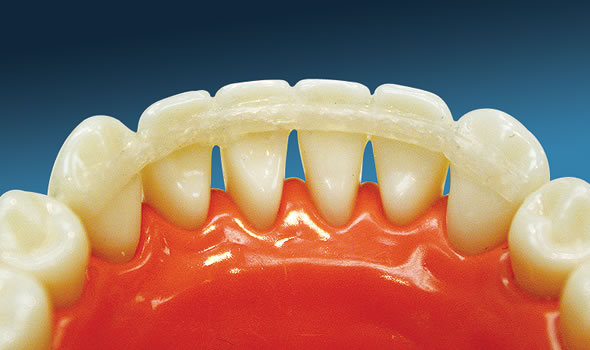
Cover the retainer with a thin layer of flowable composite, light cure, and finish.

If you are a
customer from
UNITED STATES,
click below.
BUY NOW!
|

If you are a
customer from
CANADA,
click below.
BUY NOW!
|










